InDesigner: BUST Magazine
Diane Burns shares the story of the first feminist-oriented lifestyle magazine.

This article appears in Issue 119 of InDesign Magazine.
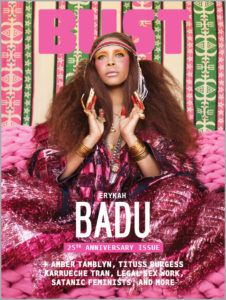
A lot has changed in the past 25 years since BUST published its first feminist-oriented women’s lifestyle magazine. But the mission remains the same, as the magazine strives for an attitude that is “fierce, funny, and proud to be female.”
While firmly planted in its feminist roots, at the same time BUST addresses a variety of current women’s interests, including celebrity interviews, music, fashion, art, crafts, sex, and news.
As Gloria Steinem, the political activist who co-founded Ms. Magazine in 1972, recently told the New York Times: “BUST has never asked readers to divide ourselves into politics versus fashion or seriousness versus adventure.”
Ironically, while always feminist in philosophy, early design inspiration included Playboy, as well as other popular magazines with strong graphics and appealing lifestyle allure. In those days, the magazine was a largely mechanical operation, where X-ACTO blades were wielded alongside paste-up type galleys. At some point along the way, Art Director and now co-publisher Laurie Henzel taught herself what was then called desktop-publishing software.
Design Inspiration
The BUST look and feel is the work of Henzel and another super-powered woman, Senior Designer Meredith Felt. They make up the core team that brings an issue to life, six times per year.
Photography and graphics are the driving force behind the design of the magazine. But the images are not about submissive women lounging around in lingerie; the images are shot to show strength and confidence, along with inspiration and insight into current trends.
Though budgets are tight, plenty of big names have been eager to appear on the covers, in support of the magazine in this era of #MeToo. Covers have featured stars of film and
TV such as Tina Fey, Amy Poehler, and Melissa McCarthy, as well as musical artists like Björk, Erykah Badu, and Cher.
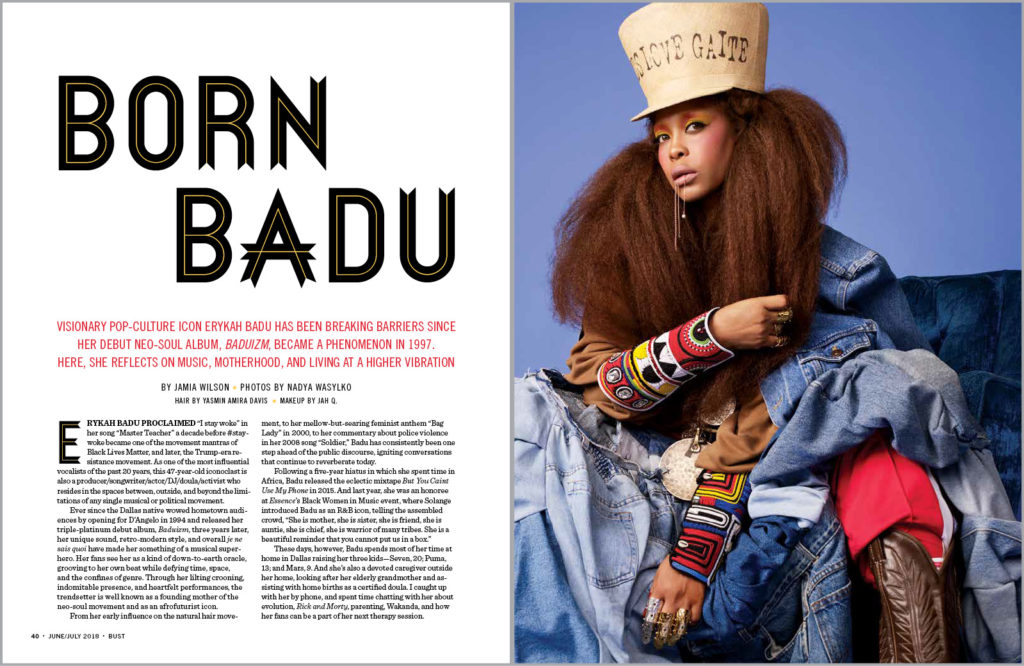
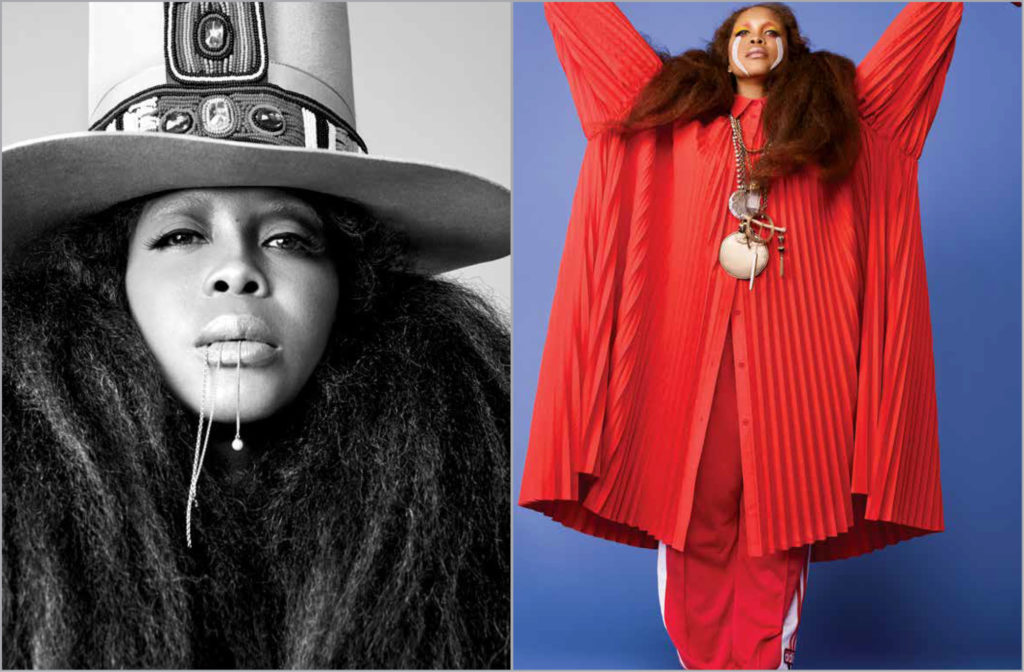
Strong Visuals. Photography drives much of the design of BUST magazine. Photo shoots are staged to produce images of women that are provocative and strong, with a touch of sass thrown in.
The Process
With publication six times per year, each issue is produced on a 2-month work cycle. The planning for each issue starts about 3–4 months out.
The editorial process starts with a meeting where story ideas are pitched and voted on. Once drafts come in, Henzel and Felt look over the stories and assign them to the illustrators or photographers they think would be best for each piece.
For some stories, they know exactly who among their usual freelancers they want to ask to shoot or illustrate a story. But, as with the writers they hire, they also spend a lot of time finding new talent, so that each issue is unique.
Once photographers send their photos and illustrators their sketches, Henzel and Felt then make the final selection for visuals. The layout design is based around the art and the mood of the story. It’s a highly collaborative effort between them. After a design is set, they review each other’s work before it leaves their 2-person art department and goes back to the editors.
Next, each section goes between art and the editors until all edits have been made and editorial has signed off on final layouts. All files are shared on Dropbox for easy access by all, regardless of location.
A template is used for the front and back sections of the magazine. The design of the feature articles, however, is wide open.
Fonts for the titles in the front and back sections are always either Adelle, Ziggurat, or Sentinel Bold Italic. The body copy fonts used for the front and back sections are a mix of 9 pt Sentinel and 8.5 pt Trade Gothic. The two typefaces work well together and can be used interchangeably because they run the same length.
Digital Formats
While the print magazine, with a current circulation rate of over 70,000 readers, is the core of the BUST brand, content is also available on the company’s highly-trafficked website, bust.com. The site boasts an average of 500,000 unique visitors every month.
To convert the print magazine content for the web, photos are converted to JPEGs. Text is exported, section by section, as RTF files. The Digital Editor takes it from there and publishes each piece online.
In addition, there are two digital editions of the print magazine, a downloadable PDF from the website and an iPad app. Both are digital replicas of the print magazine, but the iPad app version is more interactive, with additional links and videos added in.
For the website’s digital issue, the print magazine file is exported as a smaller web-friendly PDF. It then goes to the Associate Editor, who uploads it to the site.
For the iPad edition, the print edition PDF is uploaded to a conversion service, MAZ. Links are added with the help of an intern, using the MAZ portal. MAZ provides the app conversion, with an interface for subscribing to, previewing, and browsing through issues.
After 25 years, the BUST community is going strong. With luck—and pluck—may their future be brighter than ever!
Regular Sections
The front and back sections of the magazine are template-driven, which gives consistency from issue to issue. The typography and basic design elements remain the same, but the layout is varied to accommodate different content.



Features
All features use the same body text, Sentinel, but are otherwise completely free-form and vary widely, even in the same issue. The designs are driven by the content and images, as well as the mood the story is trying to convey.
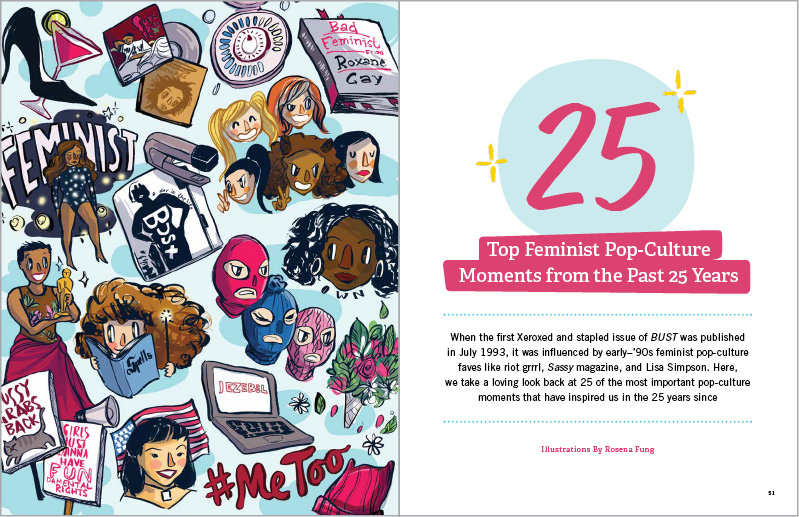

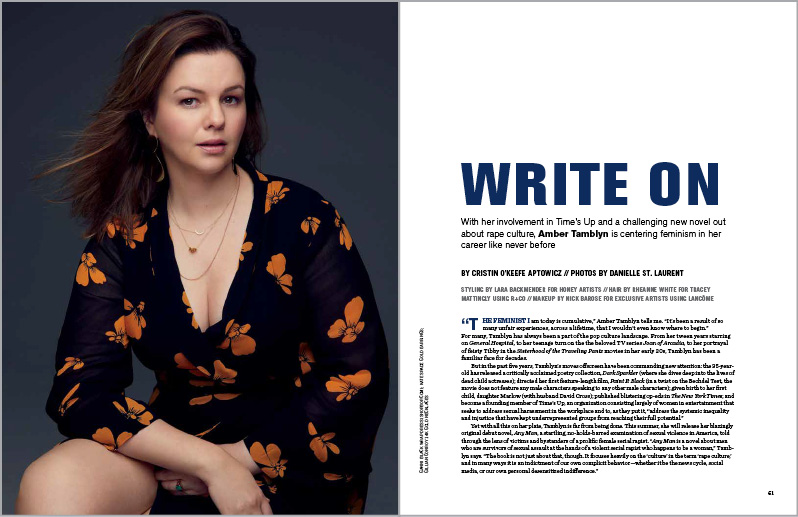

Boy du Jour
Providing equal opportunity, each issue features a page or two on famous members of the opposite sex.
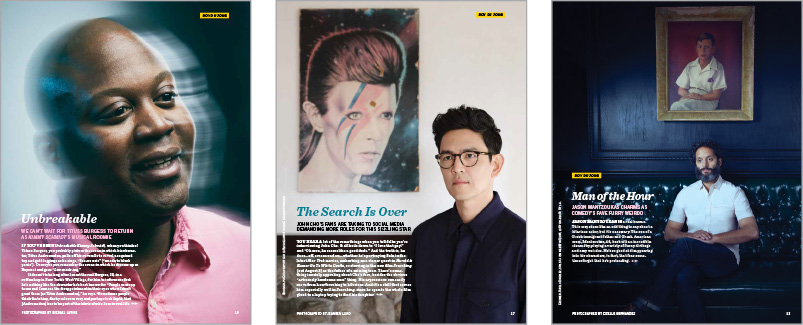
Cheeky Chic
While keeping up with the latest trends for the young and hip, the magazine maintains its cheeky attitude with images that show women who are confident and stylish.
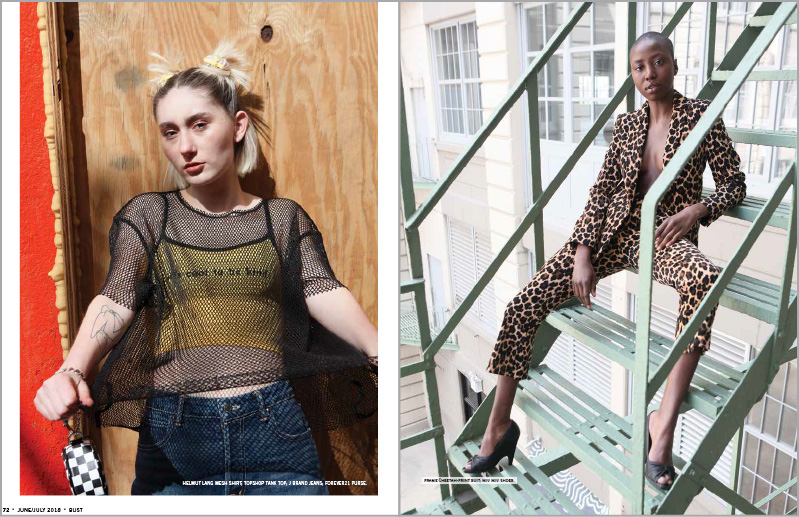

The iPad app
Issues are available via the BUST iPad app. The art department uploads each issue to the MAZ platform, which converts them for the app. The app provides an interface for subscribing to, previewing, and browsing through issues.
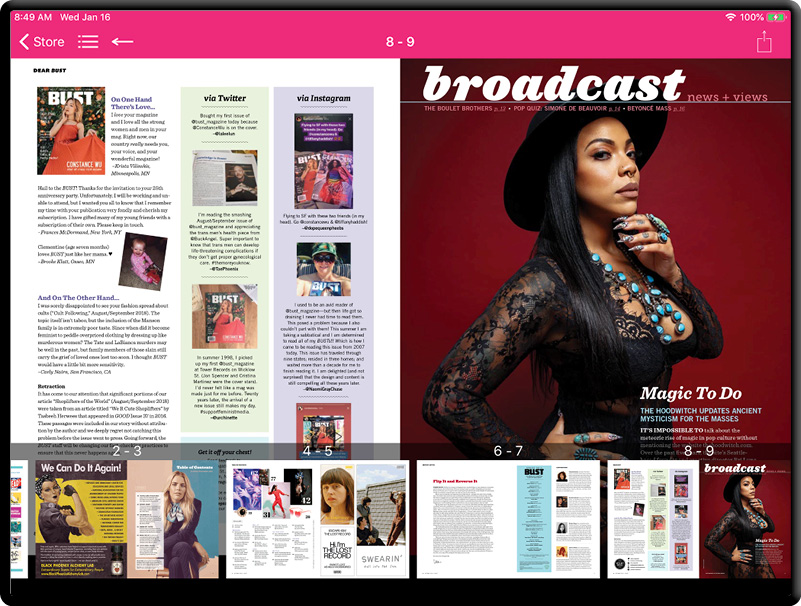
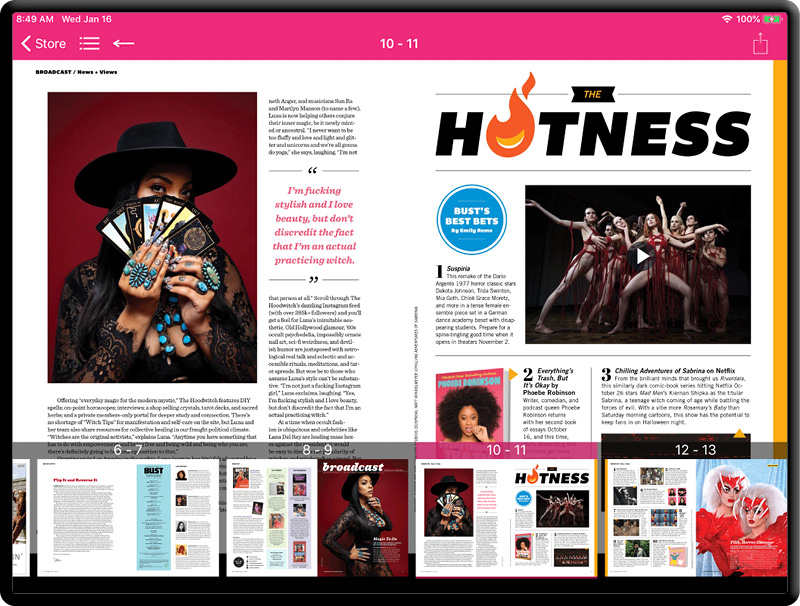
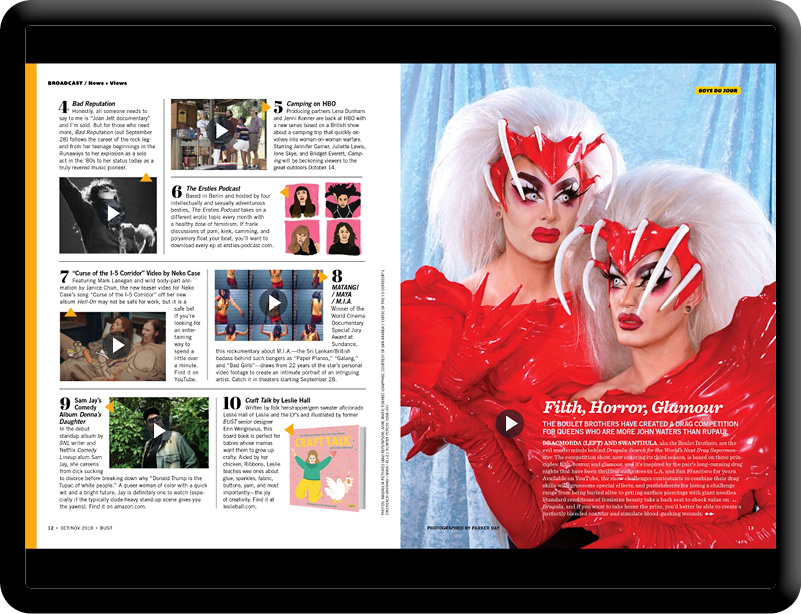
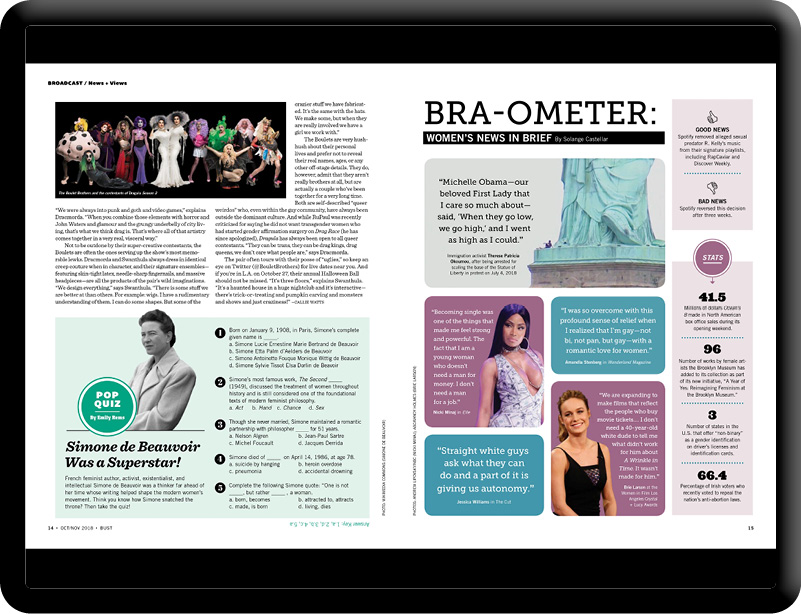
Diane Burns is an author, trainer and consultant. She is the author of several InDesign courses for LinkedIn Learning, including “Publish Online with InDesign.”
Commenting is easier and faster when you're logged in!
Recommended for you
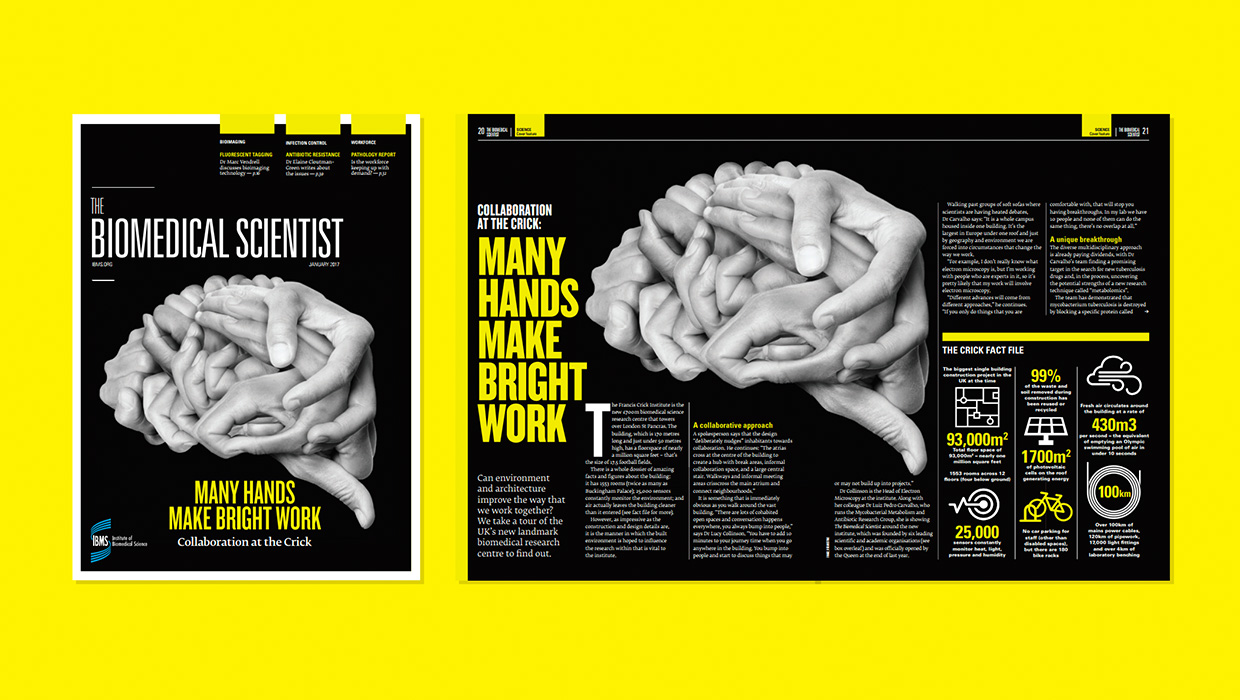
InDesigner: Carrie Bremner
This UK art director for Newsweek blends bold graphics with editorial accuracy
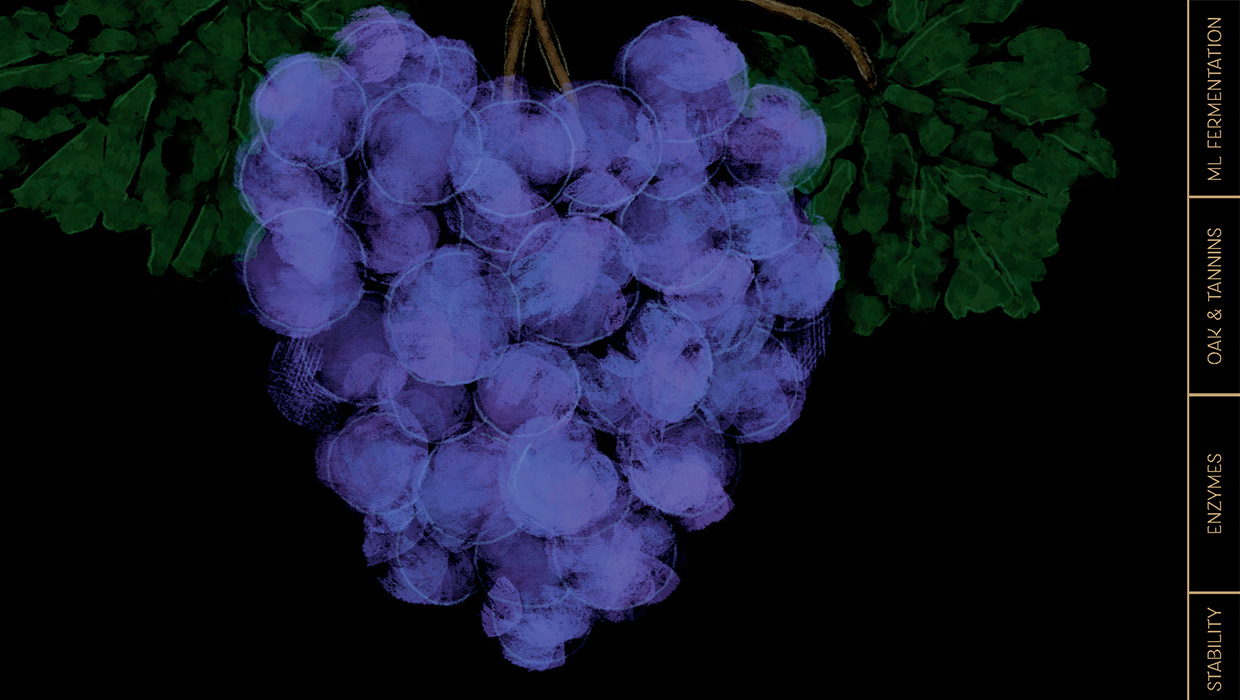
InDesigner: Alan Just
Learn how a shared AirTable database was the key to streamlining a complex publi...

InDesigner: Theresa Stoodley
Learn about the creative process behind award-winning editorial and information...



